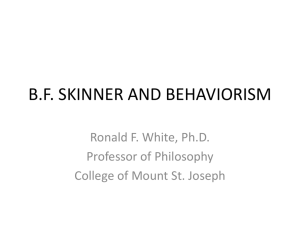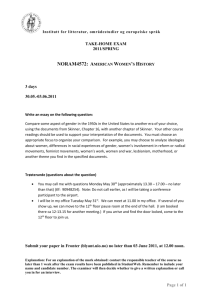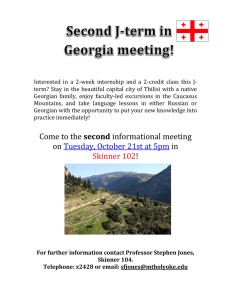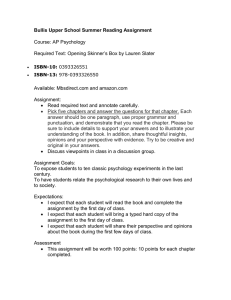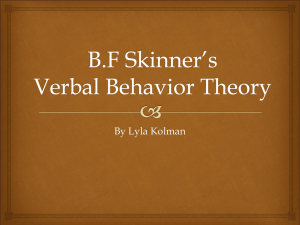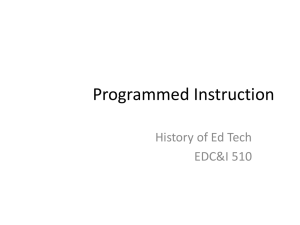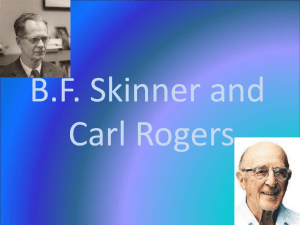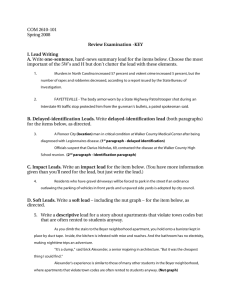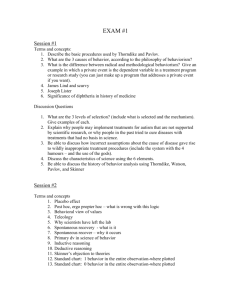Nov. 1
advertisement
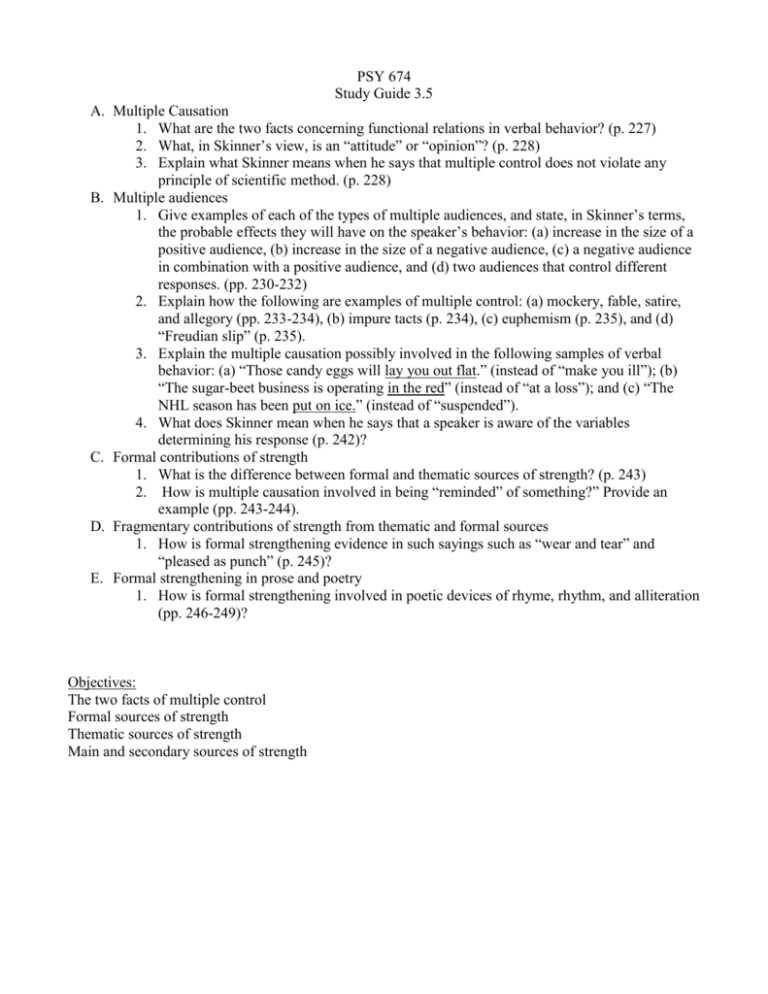
PSY 674 Study Guide 3.5 A. Multiple Causation 1. What are the two facts concerning functional relations in verbal behavior? (p. 227) 2. What, in Skinner’s view, is an “attitude” or “opinion”? (p. 228) 3. Explain what Skinner means when he says that multiple control does not violate any principle of scientific method. (p. 228) B. Multiple audiences 1. Give examples of each of the types of multiple audiences, and state, in Skinner’s terms, the probable effects they will have on the speaker’s behavior: (a) increase in the size of a positive audience, (b) increase in the size of a negative audience, (c) a negative audience in combination with a positive audience, and (d) two audiences that control different responses. (pp. 230-232) 2. Explain how the following are examples of multiple control: (a) mockery, fable, satire, and allegory (pp. 233-234), (b) impure tacts (p. 234), (c) euphemism (p. 235), and (d) “Freudian slip” (p. 235). 3. Explain the multiple causation possibly involved in the following samples of verbal behavior: (a) “Those candy eggs will lay you out flat.” (instead of “make you ill”); (b) “The sugar-beet business is operating in the red” (instead of “at a loss”); and (c) “The NHL season has been put on ice.” (instead of “suspended”). 4. What does Skinner mean when he says that a speaker is aware of the variables determining his response (p. 242)? C. Formal contributions of strength 1. What is the difference between formal and thematic sources of strength? (p. 243) 2. How is multiple causation involved in being “reminded” of something?” Provide an example (pp. 243-244). D. Fragmentary contributions of strength from thematic and formal sources 1. How is formal strengthening evidence in such sayings such as “wear and tear” and “pleased as punch” (p. 245)? E. Formal strengthening in prose and poetry 1. How is formal strengthening involved in poetic devices of rhyme, rhythm, and alliteration (pp. 246-249)? Objectives: The two facts of multiple control Formal sources of strength Thematic sources of strength Main and secondary sources of strength
